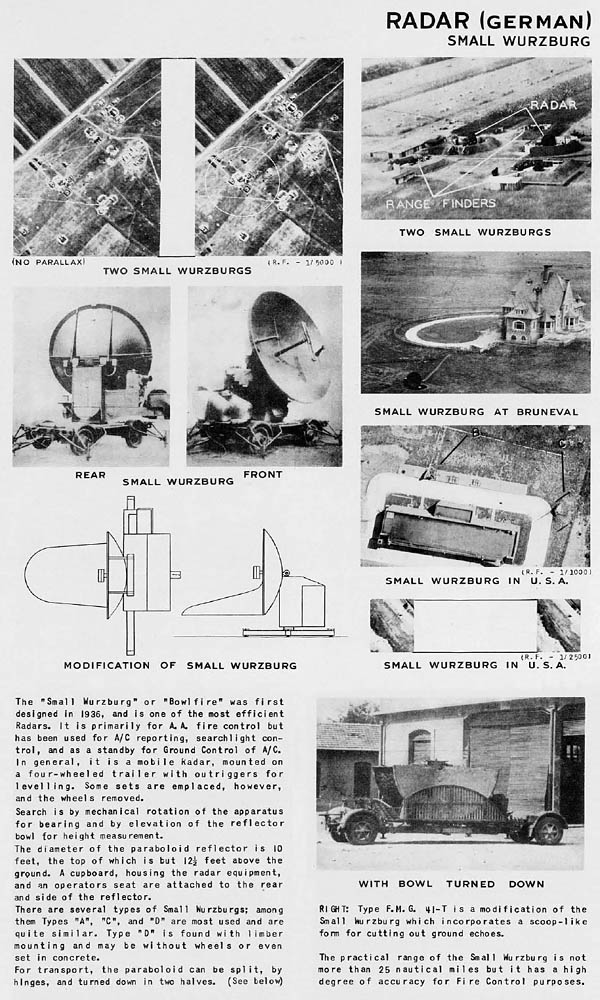Report on the German “Small Wurzburg” radar from U.S. Naval Intelligence report Japanese Electronics, March 1945:
The “Small Wurzburg” or “Bowlfire” was first designed in 1936, and is one of the most efficient Radars. It is primarily for A.A. fire control but has been used for A/C reporting, searchlight control, and as a standby for Ground Control of A/C. In general, it is a mobile Radar, mounted on a four-wheeled trailer with outriggers for levelling. Some sets are emplaced, however, and the wheels removed.
Search is by mechanical rotation of the apparatus for bearing and by elevation of the reflector bowl for height measurement.
The diameter of the paraboloid reflector is 10 feet, the top of which is but 12½ feet above the ground. A cupboard, housing the radar equipment, and an operators seat are attached to the rear and side of the reflector.
There are several types of Small Wurzburgs; among them Types “A”, “C”, and “D” are most used and are quite similar. Type “D” is found with limber mounting and may be without wheels or even set in concrete.
For transport, the paraboloid can be split, by hinges, and turned down in two halves.
Type F.M.G. 41-T is a modification of the Small Wurzburg which incorporates a scoop-like form for cutting out ground echoes.
The practical range of the Small Wurzburg is not more than 25 nautical miles but it has a high degree of accuracy for Fire Control purposes.










